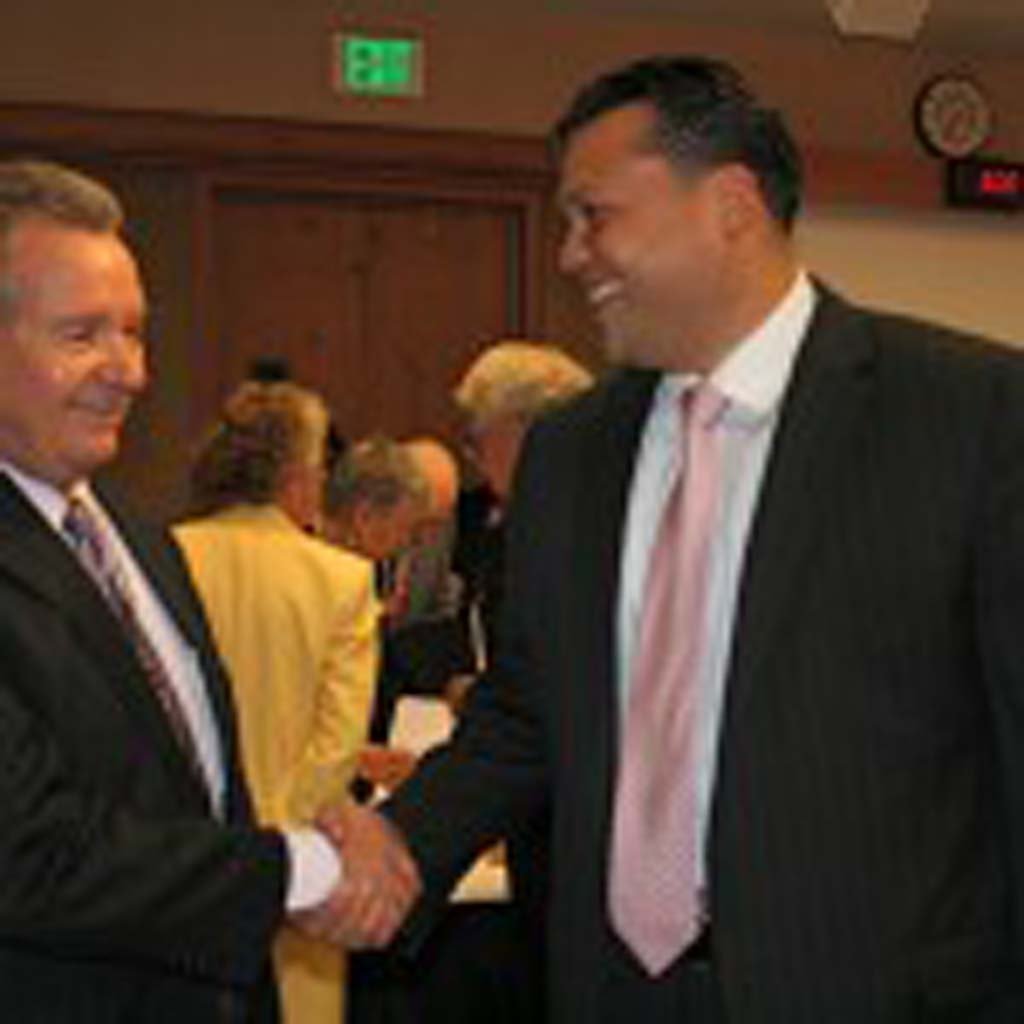Imagine a troop of U.S. marshals trying to move aside the cadre of California Highway Patrol officers assigned to protect Gov. Jerry Brown and carry him off to a federal lockup.
Picture those same marshals or companies of federalized National Guard troops confronting guards at the gates of state prisons from San Quentin to Chino, demanding the release of thousands of convicts.
Those are two of the more extreme potential scenarios that could eventually play out if the constitutional crisis that appears imminent over California’s crowded prisons isn’t defused sometime soon. Great theater, maybe, but destructive both to public safety and the public’s faith in American government.
The latest harsh salvo in the war of legal briefs between Brown and a three-man panel of federal judges demanding even more prisoner releases than the 24,000-plus the governor has okayed over the last year and a half came from the jurists.
They employed words like “defiance,” “intransigence” and “deliberate failure” by Brown and his appointed officials at the state Department of Corrections and Rehabilitation to comply with their prior orders. Yet, Brown has already done the judges’ bidding to a larger extent than some law enforcement leaders like via the controversial prison realignment program.
Not good enough, said the panel of three of the most liberal jurists in California — or anywhere in America, for that matter: District Judges Lawrence Karlton of Sacramento and Thelton Henderson of San Francisco and Appellate Judge Stephen Reinhardt of Los Angeles.
“We are willing to defer to their choice for how to comply with our order, not whether or not to comply with it,” the judges said in their latest order. “Defendants (Brown and friends) have consistently sought to frustrate every attempt to achieve a resolution to the overcrowding problem.”
Don’t comply, the judges told Brown, and we’ll force you to release 9,600 inmates from a list of “low risk” offenders they previously ordered him to prepare. The judges even gave Brown permission to disregard all state laws that might prevent a mass release. His response: asking the judges to hold off their order a year while he appeals their ruling to the U.S. Supreme Court. Fat chance.
Lawyers disagree over whether the judges are entitled to nix legitimate state laws without so much as a hearing.
Meanwhile, Brown has said realignment has already released about all the low-risk offenders available. His appeal might delay the constitutional crisis a bit.
Realignment now sees thousands of felons who would previously have gone to state prisons stay in county jails instead. The jails make room for many of them by outright releasing some prisoners deemed to be low risks for violent crime or placing other prisoners on parole much earlier than their sentences demand.
Some in law enforcement say many of them are not so low-risk at all, contending those already released are causing crime rates to rise in many cities. Redlands in San Bernardino County, for one, has seen a 17 percent hike in violent crime since realignment began in the fall of 2011.
But the judges’ ultimate decision, if upheld by the highest court, could eventually see federal marshals or troops summon convicts to the gates of many California prisons and send them home on parole.
Brown did fashion a plan for reducing the prison population by almost the 9,600 inmates demanded shortly after the judicial panel ruled that realignment wasn’t enough. He would rent open cells in county jails not already filled to capacity, use fire camps and send more people to private prisons.
But even that plan fell more than 2,500 prisoners short of the releases demanded by the judges. The judicial panel would solve this by accelerating the time prisoners are credited for good behavior, thus sending more thousands home early. Never mind that this violates state laws; the judges essentially say they can negate those.
It adds up to the potential for a classic constitutional crisis pitting federal judges against an elected governor. It would be the first such confrontation since Alabama’s George Wallace stood in a University of Alabama doorway in an unsuccessful bid to block court-ordered integration almost 50 years ago.
Good theater, yes. But lousy public policy.
Email Thomas Elias at [email protected]. His book, “The Burzynski Breakthrough, The Most Promising Cancer Treatment and the Government;s Campaign to “ is now available in a soft cover fourth edition. For more Elias columns, visit californiafocus.net

